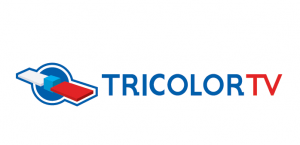
In the latest SpaceWatch Middle East interview series, Torsten Kriening speaks to Markus Fritz, Director of Commercial Development and Marketing, at Eutelsat. They discuss the Middle East satellite market, areas for growth, company innovation and the future of the business.
Eutelsat is one of the satellite operators in the Middle East, a very contested market. Can you tell us what your growth strategy is in the region and where you see potential for future growth?
We have a very strong position in the Middle East from our orbital slot at 7/8 degrees West which we share with Nilesat. Our recently published 2016 survey took the pulse of the vibrant Arab TV market and highlighted key trends that include the acceleration of High Definition broadcasting and the diversity of free-to-air channels in the region. The survey confirmed the pole position of our 7/8 West neighbourhood that enables TV channels to reach into more than 52.3 million homes in 14 Arab countries. HD is clearly gaining traction, with the number of HD-equipped homes crossing a threshold of 20 million, up from 14.4 million and now accounting for 34% of TV homes in the region. This percentage is even higher within the 7/8 West audience (46%). Looking ahead, the seeds are being sown for the Ultra HD market, with 50% of people interviewed for our survey aware of Ultra HD, and 1.2 million Ultra HD sets sold by the end of 2015 according to GfK.
In other areas of activity, we believe there is a long-term role for satellites in the connectivity business, both fixed and mobile (maritime, in-flight, cars…). We work hard to constantly innovate and focus closely on customer requirements in order to provide end-to-end solutions.Through our global fleet and a network of teleports we are also able to support our Middle East customers as they expand into new geographic markets.
Can you tell us more about the SmartBEAM solution that Eutelsat has introduced?
SmartBEAM is a new IP-based video solution that has emerged from viewer and broadcaster demand for multi-screen viewing and improved signal quality. It offers content providers a satellite-based solution for multiscreen video delivery to connected devices. SmartBeam is designed to enable broadcasters and pay-TV operators to leverage the ubiquitous coverage of satellites to broadcast video content in IP format, creating a network that is completely dedicated to IP-native terminals, including tablets and smartphones. It works with any WiFi-enabled device, supporting instant channel change, DRM security, and low latency. It is in effect a gamechanger for extending access to video content on mobile devices beyond terrestrial networks and has a competitive edge for mass market delivery of OTT services.
Tricolor TV, one of our key customers in Russia, is already deploying the service and we are analysing other markets, including emerging markets as a route to offering simple access to video content on mobile devices.
We have talked about video, but can you tell us what you are doing in other industry segments?
Our strategy is to address the main business verticals in our sector – video, data, government services, fixed and mobile broadband connectivity. Video that generates 63% of our revenues is our core business and we constantly innovate to keep that market leadership and grow the broadcast business further.
We also believe it is important to develop solutions that can be adapted for use acrossmultiple markets. SmartBEAM, for example, can serve the video business and can also be relevant for government, maritime or disaster recovery applications. So there are crossovers that enable us to optimise our efforts and investment.

Is IoT another service that you are looking at?
We already have a minority investment in SigFox, an IoT company that is blazing a trail in this emerging market. Sigfox is integrating our SmartLNB, an innovative low bitrate, low-power satellite technology into its infrastructure, as a smart way for base stations in remote locations to exchange data. As a satellite-based device, the SmartLNB offers the benefits of simple installation, guaranteed bandwidth and ubiquitous coverage. It embeds state-of-the-art technology to create a bridge between satellite and IP worlds and we believe will be a product of choice for smart energy, connected home and other monitoring and control applications for IoT and M2M markets. The SmartLNB has also been selected in the Americas by Microspace Communications as a service platform for customers seeking machine to machine (M2M), SCADA, and IoT solutions in sectors including oil & gas, digital signage, security, and corporate networks.
How has the loss of AMOS 6 affected Eutelsat’s business?
We have been able to bounce back from the loss of the Amos-6 satellite with a multi-year agreement with Yahsat, for capacity on up to 16 Ka-band spotbeams on the Yahsat 1B satellite in order to roll out broadband services during the first half of 2017. Further expansion will be supported later in the year using capacity on 18 spotbeams on Yahsat’s Al Yah 3 satellite, scheduled for launch in early 2017. Both Yahsat 1B and Al Yah 3 are equipped with high power spotbeams with Sub-Saharan African coverage, ideal for community and Direct-to-User Internet access using affordable, off-the-shelf customer premises equipment. This means that our African broadband venture, now called Konnect Africa, is back on track and can continue to pursue its vision of deploying high-quality infrastructure that will transform Africa’s broadband landscape.
 Do you see the upcoming LEO constellations as a threat to established satellite operators or are they complementary?
Do you see the upcoming LEO constellations as a threat to established satellite operators or are they complementary?
The LEO constellations being talked about have the potential to respond to different requirements so their arrival is more a reflection of an expanding universe for satellite-based communications than a more competitive one. Whereas we don’t exclude the value and potential of other orbits, our investments are fully focused on geostationary where there is significant scope for development. For broadcast services, geostationary satellites are able to cost-efficiently deliver significant bandwidth and power. In the broadband market a new generation of Very High Throughput Satellites will generate throughput for fixed and mobile connectivity that compares to fibre for both speed and data volumes. In the market for data and government services we are also working on breakthrough programmes such as Eutelsat Quantum that will enable customers to actively define and redefine the power, coverage and frequency they need. So we are not short of ideas in GEO and programmes for future customers that keep us well occupied.
SpaceWatch Middle East thanks Markus Fritz, Director of Commercial Development and Marketing, at Eutelsat, for the interview.
Original published at: http://spacewatchme.com/2016/12/spacewatchme-interviews-markus-fritz-eutelsat/
 SpaceWatch.Global An independent perspective on space
SpaceWatch.Global An independent perspective on space

